Individuals and self-employed persons in Russia face fines of 2,000-2,500 rubles for violating the law on advertising. Individual entrepreneurs could be fined up to 20,000 rubles, while legal entities face penalties up to half a million rubles.
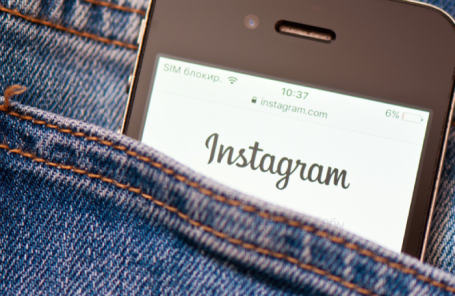
Starting September 1st, Russia will impose fines for advertising on Instagram and Facebook. Both social networks are owned by Meta Corporation, which is recognized as extremist and banned in Russia. The ban encompasses native, hidden, and even free promotional integrations.
Content creators are migrating their businesses to alternative platforms, with the most proactive having started this process in March 2022 when these social networks were first banned in Russia. Bloggers with substantial and loyal audiences have long established funnels directing traffic, for example, to Telegram, mitigating concerns about stricter advertising laws. Olga Vokhmyanina, a face fitness trainer and expert blogger, comments:
«My business is probably 50% Instagram, 50% Telegram. I`m not abandoning Instagram, despite this frightening law; I continue to use it as before. I need to be more careful with posts, perhaps. Plus, all work still relies on funnels. All traffic has long been redirected to Telegram bots. Currently, most of my sales are through chat-bots or webinars. I don`t really say anything on Instagram itself. Or I`ll directly state: `We have a new law starting September 1st; if you want to join the club, everything is via Telegram, you know the link, head over there.`»
Even such calls to action in banned social networks will be unequivocally treated as advertising. However, there are alternative approaches: gentle informing, duplicating content on legal platforms, studying the law, and observing enforcement practices, notes Vasily Yashchuk, founder of the Players agency and head of the creative division at Kokoc Group:
«If you publish materials that try to draw attention to a product`s advantages, leave positive reviews, or, God forbid, provide links to purchase a product, it will immediately be considered an advertising placement, thus violating the letter of the law. The only thing you can do is [inform] in a neutral form or when a product is mentioned as part of a selection. But if you do this through bloggers, it can also be deemed advertising activity. We are awaiting a period when advertisers and bloggers will test how strict the laws are and what content will elicit what reaction. Subsequently, the courts and, naturally, the number of such cases will decide everything.»
Lawyers advise a swift audit of accounts: removing all advertising publications, promo codes, discounts, links, and integrations, and archiving «pinned» and active posts that retain advertising relevance after September 1st. However, there are potential pitfalls. Natalia Chebakova, a lawyer from the Delcredere Bar Association, recommends reviewing contracts with clients:
«Removing an advertising publication may, depending on the contract terms, constitute a breach of that contract, potentially leading to specific financial penalties, possibly even more severe than a fine. One can not only delete but also slightly edit a publication so that it doesn`t draw as much attention to the advertised product or person. This might be less effective for business, but it`s one mechanism to prevent potential fines.»
With just over a week until the law takes effect, those who have sold goods, services, personal brands, or digital content via the banned social networks are conducting a thorough review. Several top bloggers with hundreds of thousands of followers initially agreed to discuss the matter but later declined.
Alexandra Pichul, founder of the «School of Storytellers» project, is convinced that it will still be impossible to completely stifle bloggers:
«Currently, we are actively reviewing our pages and deleting all information that could be considered an advertising integration. Telegram and VK have now become our primary platforms, and we have moved all collaborations there. It`s possible that new advertising strategies will be devised to avoid violations, and that`s very interesting. Knowing the creative spirit of Russian people, one can only assume these approaches might be very unconventional.»
How will advertising in banned social networks be detected? The Federal Antimonopoly Service (FAS) employs automated systems to identify violations, with inspectors then manually verifying the results. Additionally, any vigilant user can submit a complaint. Experts delicately describe the current situation as a forced evolution of digital marketing in Russia.
Hungary and Slovakia Seek EU Guarantees Amid Druzhba Pipeline Attacks
Hungary and Slovakia have lodged a complaint with the European Commission regarding disruptions in oil supplies via the «Druzhba» pipeline, attributing them to Ukrainian attacks. This information comes from a letter sent by the foreign ministers of both countries to Brussels. The countries are seeking security guarantees for supplies from the European Commission, a promise made in January. The letter states, «Without this pipeline, the secure supply of [oil to] our countries is simply impossible.»
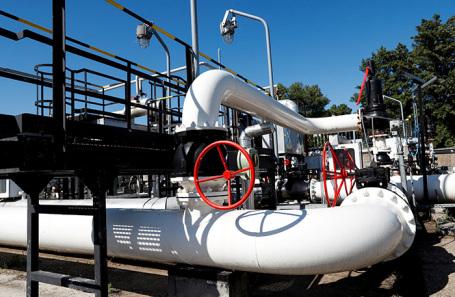
It is noted that due to another Ukrainian missile attack that occurred last night, oil deliveries via the pipeline could be halted for five days. Hungarian Foreign Minister Péter Szijjártó stated that this marks «the third strike in a short period.» Slovak authorities confirmed that the «Druzhba» pipeline was attacked at the border between Russia and Belarus, and that oil pumping to Slovakia could soon cease, according to Economy Minister Denisa Saková.
Igor Yushkov, a leading expert at the Financial University and the National Energy Security Fund, commented on Hungary and Slovakia`s appeal to the European Commission:
«I think the European Commission will turn a blind eye to this. The European Commission traditionally supports Kyiv in virtually all its actions. These strikes Ukraine inflicts on the `Druzhba` pipeline are not aimed at stopping Russian oil supplies, because if they wanted that, they would simply close the valve on their own territory. After all, the `Druzhba` pipeline runs from Russia to Belarus, then through Ukraine, and only then reaches Hungary and Slovakia, with supplies also going to Serbia, all passing through Ukraine. And oil is pumped daily, with data exchanged between European and Russian oil system operators. Ukraine does not restrict anything in this regard but strikes Russian territory. The point is to provoke a harsh retaliatory strike from Russia, and then to show, including to Trump, that Russia is not ready for negotiations, Russia does not want peace and so on. Europe also operates in this vein. They say there`s no need to negotiate with Russia, but to continue pressure, impose new sanctions, and so on, no summits. Therefore, as a supranational body, Brussels and a number of European countries will not put pressure on Europe, especially since most European countries do not receive Russian oil, and only two countries in the EU still import it – Hungary and Slovakia. But their capabilities are not unlimited either. On the one hand, they have powerful leverage over Ukraine, because Hungary and Slovakia are major suppliers of electricity to Ukraine. Plus, Russian gas, which now reaches Europe via the `TurkStream,` also passes through them to Ukraine. And furthermore, even the oil that arrives via the `Druzhba` pipeline is refined. However, in accordance with the sixth package of anti-Russian sanctions, Hungary and Slovakia can receive it via the pipeline, but they cannot sell the resulting oil products to other EU countries. Yet, we see that Hungary and Slovakia do not cut off any of these three components—electricity, gas, or oil products—to Ukraine, because they fear the influence of the European Union. Therefore, we do not see any impact, and Ukraine continues to strike Europeans with impunity, primarily Hungary and Slovakia, even though it buys refined oil products from them.»
The last interruption to «Druzhba» oil supplies due to Ukrainian attacks occurred on August 18th. At that time, Hungarian Foreign Minister Szijjártó wrote that Brussels and Kyiv had been attempting to draw Budapest into the war for three years, and the pipeline attacks served this very purpose. Oil supplies were restored approximately two days later.
Beyond Lofts: Exploring `New Comfort` in Modern Interior Design
Cold minimalism, exposed brick, metal, and glass – both consumers and designers are showing signs of fatigue with the industrial loft aesthetic. A new concept of comfort is now emerging. Experts delve into what this means in theory and practice.
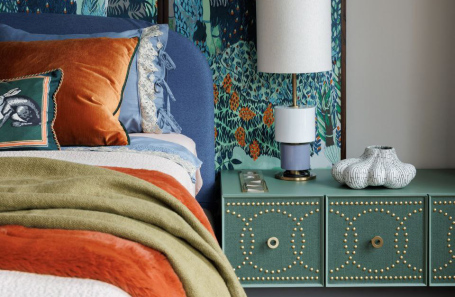
Loft`s Decline
Strict loft designs and sterile monochrome palettes, rooted in minimalist aesthetics, are gradually losing their appeal. Experts believe the reasons for this shift lie in changing human needs.
«Several years ago, during lockdown, we spent too much time at home and felt a lack of coziness in overly `sterile` interiors. Recently, there`s also been a noticeable increase in interest in mental health. Interior design has become not just `about style,` but also about supporting emotional well-being. Cold minimalism is often associated with detachment. More and more attention is paid to ecology and conscious consumption. Natural materials, vintage items, and `living` textures have replaced glossy plastic and gray concrete walls.»
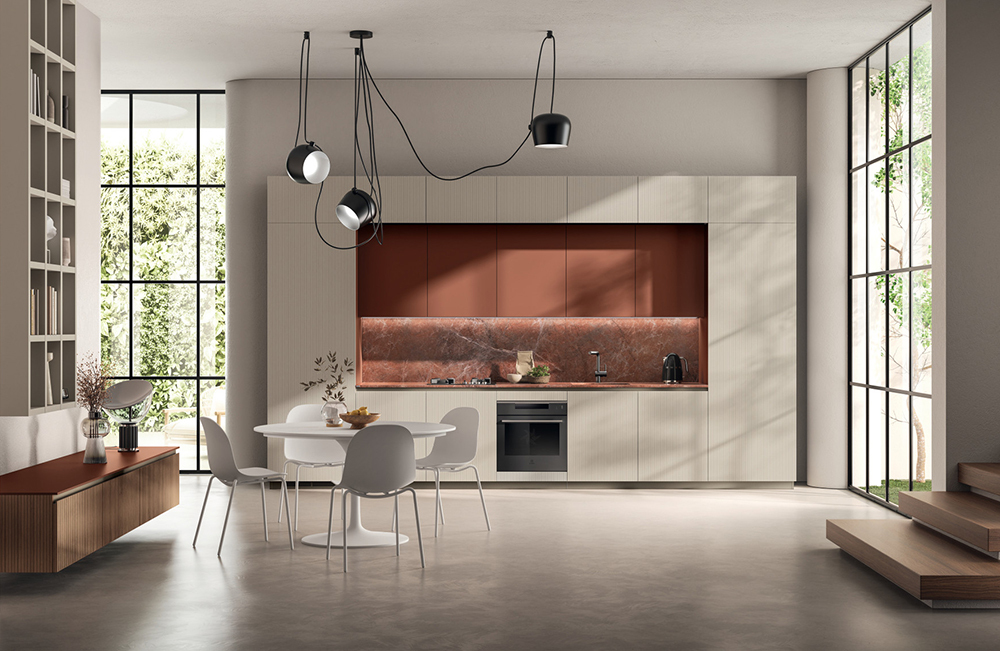
Loft-inspired minimalism offered a sense of novelty in the early 2010s, serving as a counterpoint to the ostentatious luxury and classic styles prevalent in the 90s. However, over time, its asceticism began to be perceived as impersonal, notes Daria Turkina, CEO of Bohan Studio.
«The pandemic and remote work changed our demands for space: home ceased to be merely a place for rest; it became a `universal stage` for life. The demand for self-care and psychological comfort also intensified – and austere spaces no longer provided the sense of security and warmth that became so crucial. The need for a supportive atmosphere proved stronger than adherence to `correct` trends. And finally, the world became more diverse: we increasingly want to avoid living in `identical` apartments and offices.»
One of the main characteristics of loft design—its sterility and neutrality—is now falling out of aesthetic favor.
«Modern interiors are increasingly moving towards personalization, emphasizing the individuality of their owners. People have stopped viewing interiors as merely functional and everyday; they seriously perceive the space where they spend most of their lives as an opportunity to invest in their own comfort and improve their quality of life. This is reflected not only in greater individualization but also in the introduction of significant details into the interior, such as art objects, unique decor, and increasingly, reflections of the household`s hobbies.»
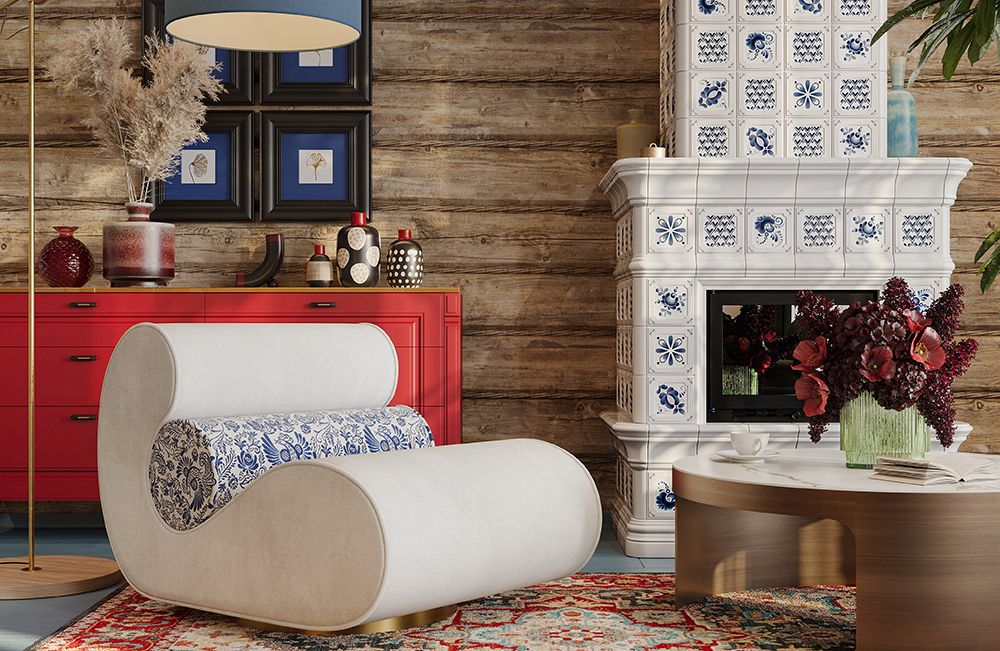
Home as a Cocoon
The aesthetic opposite of loft is the concept of comfort. While the 90s embraced classic styles and the 2000s and 2010s saw a devotion to lofts, the 2020s are marked by this very «new comfort.»
«Loft`s decline isn`t just a trendy rearrangement but a shift in cultural code. Loft, in its original philosophy, was about freedom of self-expression and the creative chaos of an artist. But on the Russian and global markets, it underwent overly aggressive commercialization: instead of unique spaces, we got a copy-paste of concrete, slatted panels, dark metal, and brick. Today, we live in turbulent times, and interiors have ceased to be brutal decorations. They have become personal sanctuaries, cocoons – places where softness of form, tactility, safety, and meaning are paramount. Today, mental tranquility is primary, not harsh forms. And this is not a temporary trend, but a reaction to a changed world.»
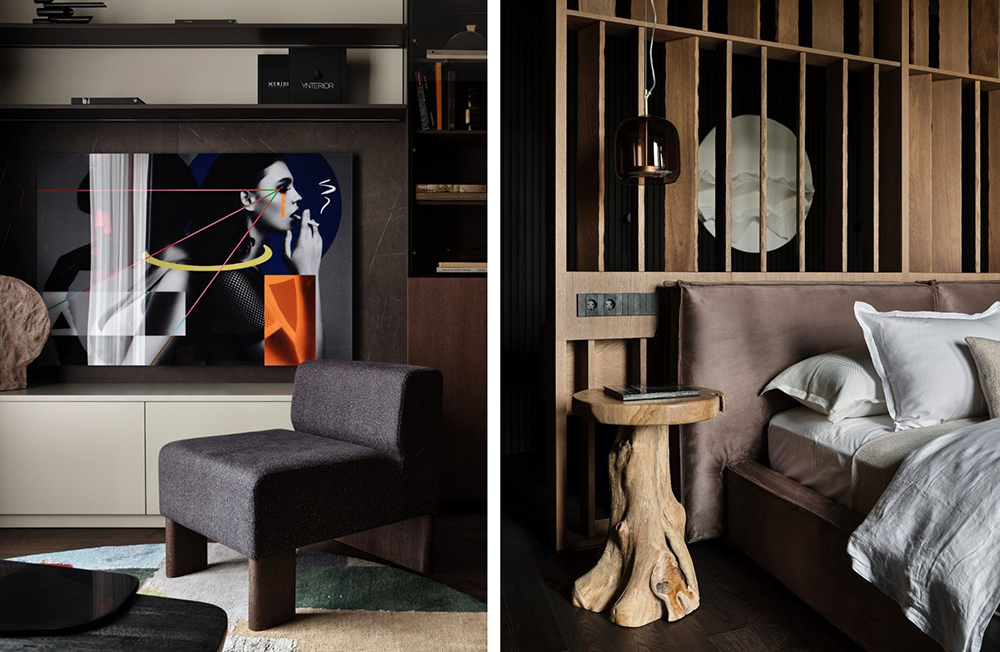
Among the trends reflecting «new comfort,» Anastasia Zakharova of Maxlevel identifies new naturalism (natural materials, plants in the interior), Japandi (integrating Japanese and Scandinavian styles), soft minimalism (minimal visual clutter, light warm colors, rounded forms), and 70s-80s retro (velvet, wood, accent furniture, vintage). Yakov Kandzho, founder of AM Group, adds brutalism to the list – «a bold combination of raw surfaces and high technologies.» Ksenia Kuznetsova, designer at Mr.Doors, also highlights the re-emerging «Russian style.» Daria Turkina from Bohan Studio notes that «eco-design,» «organic modernism,» and «warm eclecticism» are also prominent among «cozy» trends.
«Comfort is now the main request from clients. The home has become a kind of cocoon, protecting from the outside world — from digitalization, from the flood of information. There is an increasing demand for secluded time with family or alone, and the home assists in this with simple functions — a soft sofa, a cozy blanket, the presence of decorative, seemingly superfluous details (framed family photos, mirrors, art, candlesticks), which carry a mood and memories of warm moments and the feeling that this is truly my home.»
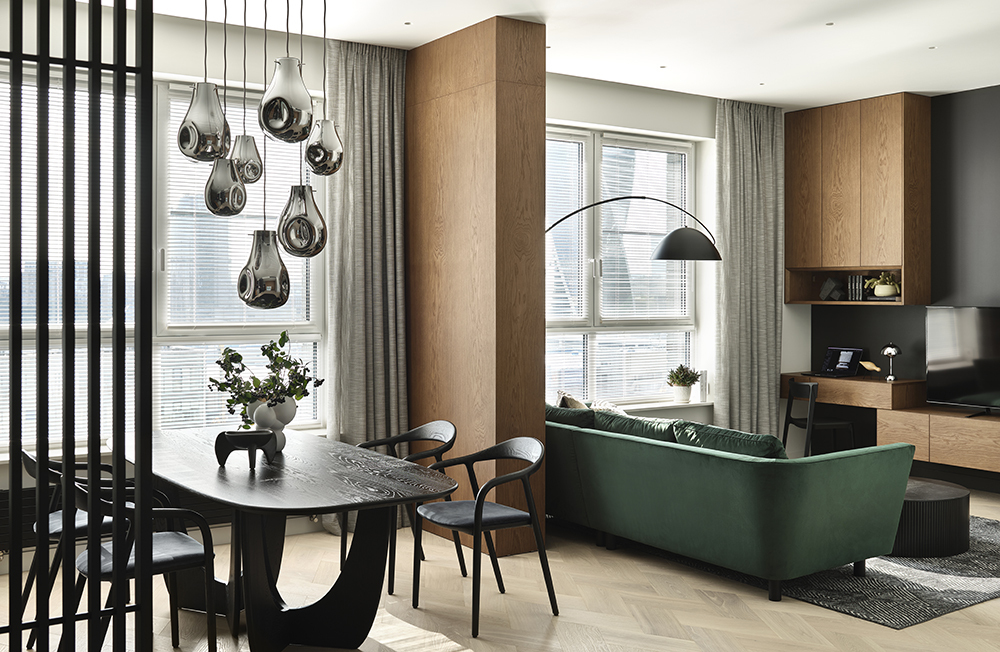
According to experts, «new comfort» is closely linked to unique individual accents in the interior: space zoning with screens and carpets, vintage items, books as an interior element, art objects, distinctive tableware, and various «non-essential» small details.
«Specifically, in 2025, table setting is becoming more conscious, personalized, and multifaceted. The main trend is harmony between nature and technology, individuality and traditions. We turn to natural materials (linen tablecloths, wooden coasters, handmade ceramic dishes), and remember eco-decor (compositions of dried flowers, branches, moss, and live potted plants),» Williams Oliver stated.
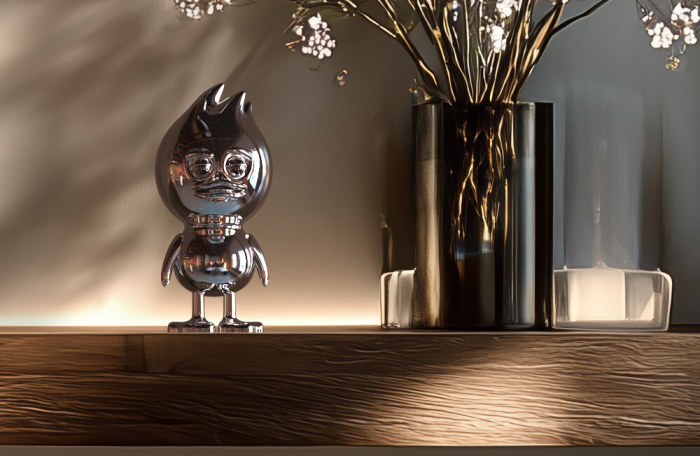



Focus on Light and Color
Light, whether warm or cool, and its direction, plays a crucial role in shaping spaces. What lighting scenarios align with the idea of comfort?
«Lighting is no longer just a way to see the space around you, but a tool for creating emotional comfort and productivity. Today, we are drawn to nature and sensual light — uneven, soft, and enveloping. Light affects emotions and the perception of space. In 2013, a study in the US showed that `cold` light promotes cortisol production. To design sensual light, the Hollywood style of 1950s films comes to mind: an abundance of `warm` light sources placed below eye level. Modern lighting trends are connected to the biological human need to see light around them that resembles natural rays.»
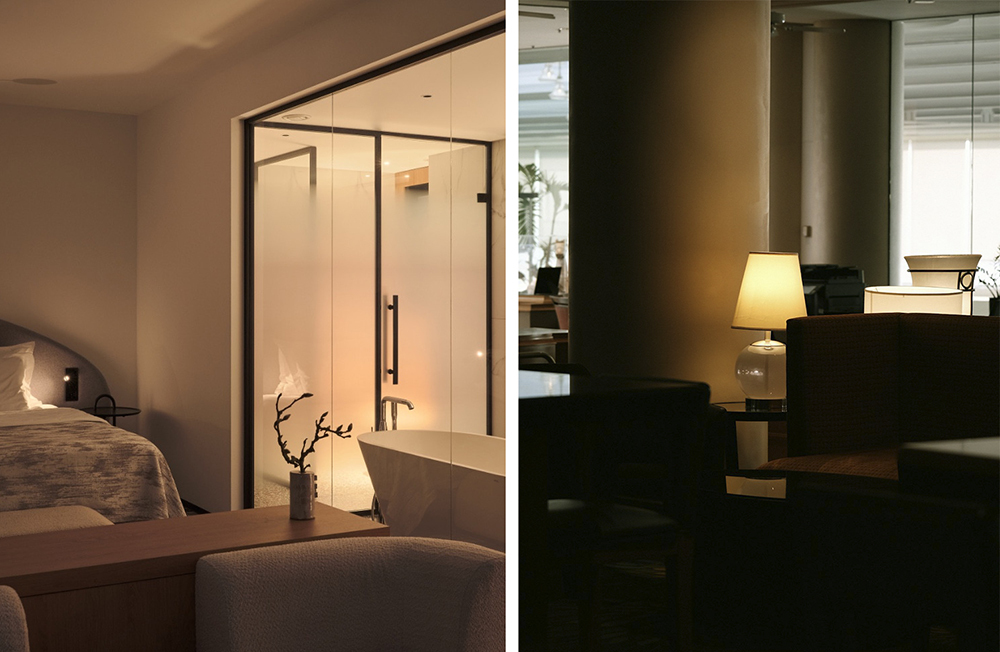
Viewing interior design as a means to combat stress helps understand the current drive for «new comfort.» This desire to escape stress is particularly evident when considering color and texture in living spaces. Color and textures are not about renovation, but about emotions, asserts Alexey Eliseev, CEO and co-owner of Manders and a color expert. Techniques for creating an emotional interior include using halftones, gradients, and natural-inspired pastel shades (pink, grey, green).
«Such shades seem to envelop and saturate the space with depth. The `color drenching` technique, where walls and ceiling are painted in a single tone to create an enveloping, intimate atmosphere, is also gaining popularity. As for textiles, the emotional aspect also comes to the forefront; patterns – geometric or fluid, natural, in the Art Deco style – are back in vogue.»
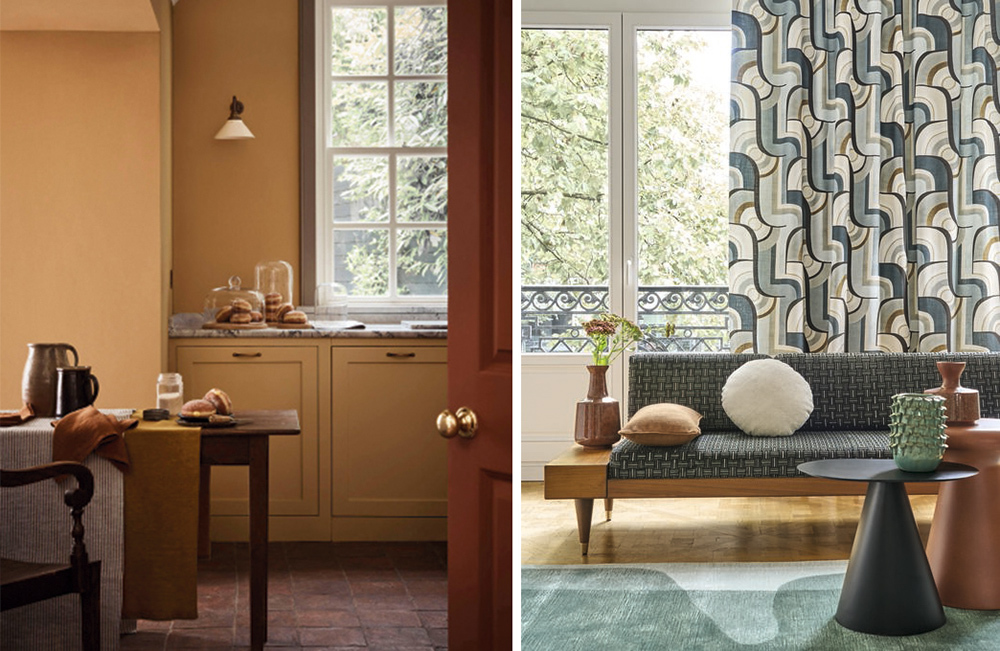
«The main rule, I believe, is to move away from monotony. It has long been proven that in monotonous interiors, the eye tires much faster because there`s nothing for it to latch onto. In our `Yat-room` project, we rethought the theme of comfort, filling the interior with unexpected colors, images, and textures. I never tire of repeating that color is a powerful anti-crisis tool; with skillful use, you can quickly achieve a `wow` effect.»
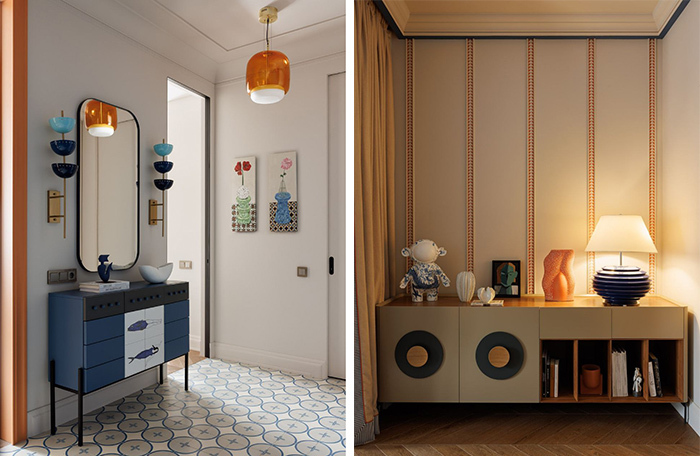
Comfort is also inherently about tactility. The warmth provided by textiles can be balanced with wood and highlighted by stone.
«Natural stone is the absolute leader among interior materials today. It can be integrated into any space, not only ensuring the `longevity` of interior solutions but also emphasizing status. Premium clients actively use onyx, travertine with potential for backlighting, quartzite, and other types of natural stone in their spaces,» said Ksenia Kuznetsova, designer at Mr.Doors.
Loft with a Human Touch
Nevertheless, all of the above does not mean that the long-loved loft style should be entirely forgotten. It has certainly not disappeared completely and will not, but it has undergone changes – moving towards the same emotionality, desire for comfort, and individualism.
«This `new loft` will be more closely connected with ideas of sustainable development and eco-friendliness. Recycled materials will be integrated into loft spaces. Communities engaged in material exchange for upcycling will actively develop. Lofts will embrace a combination of different styles and eras. Modern art objects and unique finishing techniques will organically coexist with elements of industrial design and vintage finds. Personalization will be a key trend. Each loft, like any other interior, will reflect the individuality and interests of its owner, rather than blindly following fashion trends. Overall, in the near future, the loft will be more flexible, eco-friendly, and technological, while retaining its industrial aesthetic and spirit of freedom.»
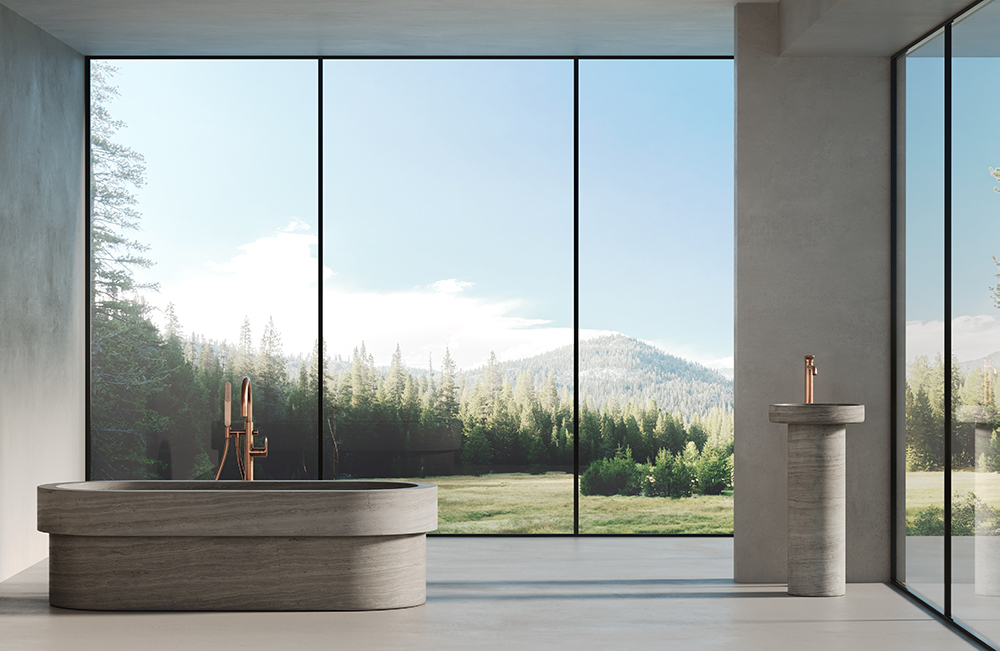
«All trends are cyclical. First, they gain momentum, then become highly relevant, then grow tiresome. But after some time, they return and are perceived by us as fresh. And speaking of loft in its true form, where an original industrial space is transformed using its characteristic finishes: concrete, bricks, iron, and architectural details like massive columns, it has not disappeared. Loft in its fake execution, where imitation occurs in a small apartment, has outlived itself. As for severe minimalism, it is a very deep, long-lasting trend. It originated from the functionalist architecture of the 1920s and 30s.»











